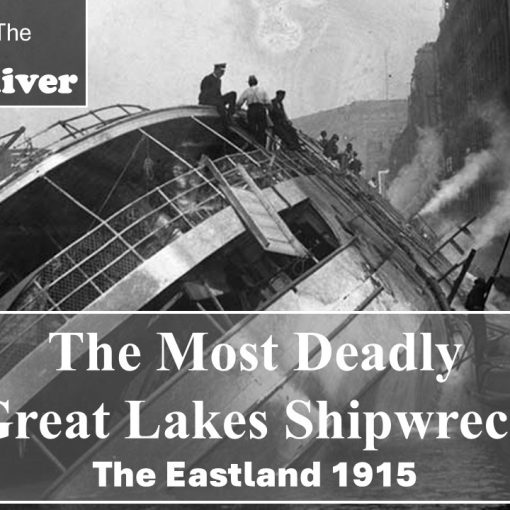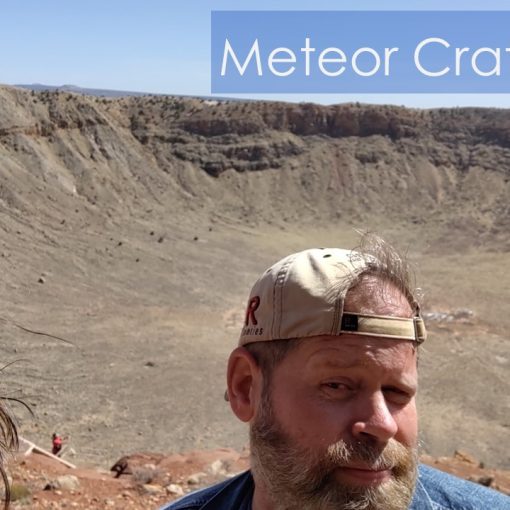The quick patter of droplets on leaves told the story of a thunderstorm that had just passed. Myself and two other candidates waited in their vehicles under the cover of electrified darkness. Through my rearview mirror I spotted a dome light. “It looks like it might be a go”, I thought to myself. I got out of my vehicle and Jerry (the Lead Evaluator) said, “it looks like it passed. Go ahead and get ready”.
It was late August in the Mohican State Park in southern Ohio. It was a hilly place. The two other candidates and I only had the last station to finish for our certification test, the night navigation course for the SARTECH I/Crewleader III certification of the National Association for Search and Rescue. We were given our coordinates and a map about 30 minutes before. Then, a very excited thunderstorm rolled through.
“It is very wet out there, you will need all of the 2 hours to complete this.”, the evaluator said.
“It should take about 50 minutes.”, I retorted.
“Keep in mind”, he continued in an attempt to warn us, “that your pace count probably is much different in this terrain”.
“Yeah – you should use Naismith’s Rule for this.”, I responded with a bit of a smile.
He glanced at me with a blank expression. “OK, is everyone ready?”
I was suddenly overwhelmed with that feeling of public jackassedness. It was as if I was trying to display my feeble knowledge to everyone present in an attempt to boost my own ego. Actually, I was so used to teaching land navigation, that I was merely trying to provide last minute advice. But the National Association for Search and Rescue doesn’t cover Naismith’s rule. It was kind of a Scottish Highlands thing.
At any rate, I made a note to myself to try and include Naismith’s Rule in future Land Navigation curriculum. It is a much better way to determine travel time in mountainous and hilly terrain.
I finished the course in about 40 minutes. I’ll admit that even my estimate using Naismith’s rule was off, but it was pretty close. After finishing the course, I started hiking back on the road to the start point. About half way there, I passed another candidate thrashing at the bottom of a sinkhole. On my hike, I attempted a few radio calls to the CP with no response. Finally, a vehicle approached from the front and coasted to a stop near. The passenger side window lowered.
“What happened?”, asked the evaluator from the driver’s side.
“I’m done.”, I crouched down to talk to the shadow behind the wheel.
“Really?”, he asked in disbelief. I just stared at him. “Well, get in”, he said after a long awkward pause.
We arrived at the CP and my score sheet was checked, the lead evaluator said, “Congrats, you passed.” Then his expression turned serious, “Now, what is Naismith’s Rule?”
Who was Naismith?
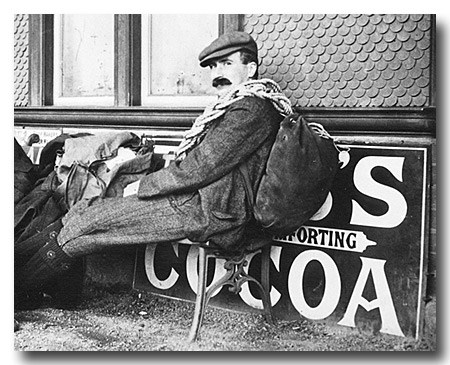
William Wilson Naismith (1856-1935) was a Scottish mountaineer. He was one of the founding members of the Scottish Mountaineering Club.
Way back in 1892, he worked out a way of estimating the length of time it would take to cover a walking route, including elevation change. Unlike pace count, it is a quick rule to use if you know elevation change and distance. Most of the modern route planning software will allow you to enter distance and personal pace, but they still don’t calculate time needed for elevation change. It is a useful tool. I’ve met a number of experienced hikers that still have difficulty estimating “accurate” time when in hilly or mountainous terrain.
Naismith worked in the Scottish highlands, which have lots of elevation change.
What is it?
A simple rule :
“allow 1 hour for every 3 miles forward, plus ½ hour for every 1000 feet of ascent”.
It is important to point out, that he didn’t actually make an allowance for descending.
If your training and experience are slanted toward kilometers and meters, you can approximate an hour for every 5 km forward, plus 1/2 hour for every 300 meters you climb.
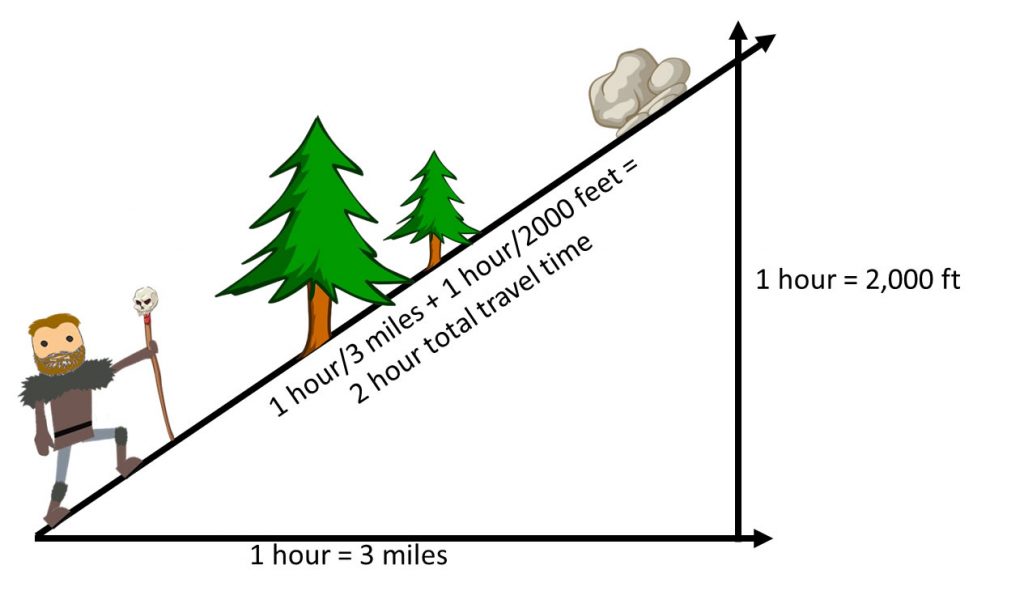
This all depends. Don’t forget that! It depends on your fitness, motivation, hunger, hydration, how many times you check twitter, etc. It is an approximate calculation and it is also an average. It is more useful in the real world than pace count and easier to use.
You will notice that descending isn’t covered by the rule. A steep descent will take longer to descend than to walk flat out. A slight descent will take about as much time as flat travel. So, what do you do?
Well, this is a bit of a debate. Some say that a steep descent is about the same as an ascent. Some say multiply your horizontal distance by 1.5. Interestingly, in all my years of travel and teaching, I find that EVERYONE has different rates on a descent – much more difference than on flat terrain or ascending. I think a lot of that difference has to do with care taken in a descent. Some will bomb down a descent, some will carefully pick there way down. Personally, I use 1/2 of the ascent formula. 1/2 an hour to descend 2,000 ft. That is for an moderate to steep ascent. Slight descents – don’t worry about it. Same as flat travel.
Now, as a rule, it should be understood that its effectiveness is limited to average and approximate. We all probably know, the more you understand a subject, the more you understand that the application of rules also requires a great deal of discretion. The rule depends on a lot of variables. Fitness level, terrain (rocky, swampy, off trail, thickness of brush), wind, taking breaks and other things will skew that average.
Also, take into account – water breaks, breaks for adjusting gear, pee breaks, navigational confusion and mistakes, note taking, picture taking and messing with electronic annoyances.
When dealing with groups, there are additional considerations. First, the size of the group will greatly decrease your speed. Also, you should calculate the speed of the slowest person in the group.
Over the years, the rule has been adapted for use in a variety of ways. It can also be refined according to your own abilities and tendencies.
Individually, adapting the rule for your own level is the best approach. 3 miles an hour is a pace for “getting somewhere at a reasonably quick pace” for most. Maybe you prefer to conserve energy for a climb or prefer a leisurely pace. Maybe 2.5 miles in an hour is more suitable. Maybe 4 mph is what you do. As Francis Bacon said, “Read not to contradict and confute; nor to believe and take for granted; nor to find talk and discourse; but to WEIGH AND CONSIDER.” Use the Naismith rule Bacon’s advice in mind.
Example:
Let’s say that we are on expedition. We beach our kayak on the Verde River where the Wet Bottom Trail Bridge crosses. We want to hike the trail to “benchmark 3242” just past the mesa. How long would it take? In my experience of training hundreds of outdoor leaders, most would assume a regular hiking pace. The most prevalent answer would be – “about an hour”. Should we base our entire schedule on that? Its 1 hour to dark. . . an hour before the rain. . . whatever. You take my point of course. It would be better to try for a more accurate estimate. So, let’s do that.
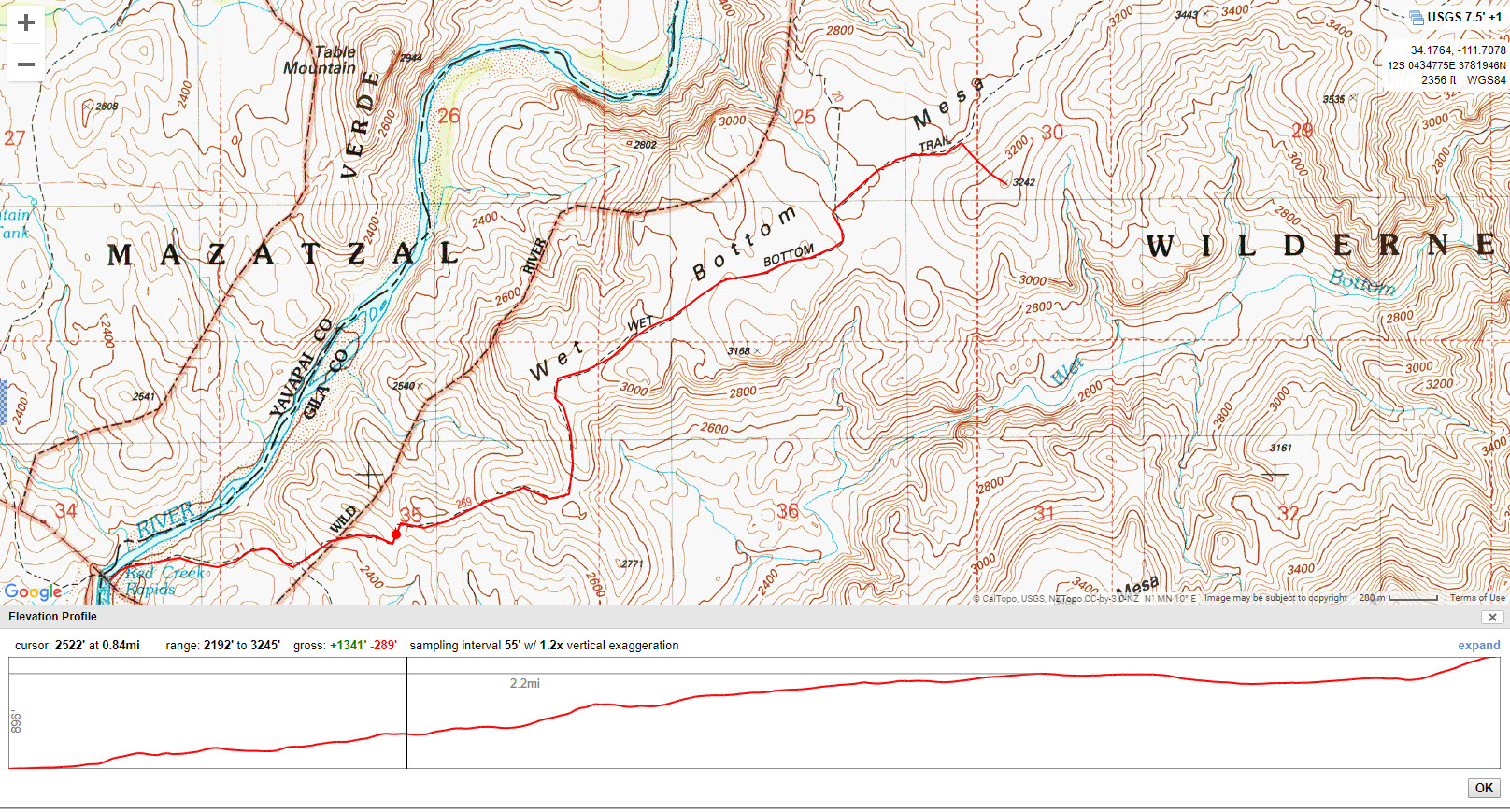
First, we assume that we hike on flat trail at 3 miles per hour. We also assume that we ascend at the standard rate of 2,000 ft per hour. The total distance is 3.15 miles and the total ascent is 1,300 ft. with slight descents totalling 289 ft. SInce they are slight descents, we won’t count those. Here is the math to approximate the time.
Horizontal time = dist ÷ rate × 60mins = 3.15 / 3 x 60 = 63 minutes
Vertical time = height ÷ rate × 60mins = 1300 / 2000 x 60 = 39 minutes
∴ Total time = 63 + 39 = 102 minutes or 1 hr 42 mins
Naismith’s Rule is a bit of a reality check for the common problem of always falling short with our planned time. It actually helps to provide more of an accurate estimate. Of course, you will have to try and factor in adverse weather, fatigue, unexpected terrain, visibility, navigation and all those possible delays.
As you gain experience with the rule, you will be able to estimate without the math.
That’s about it. Naismith’s rule just adds to an adventurer’s knowledge set. Most navigators neglect elevation change at first. The rule will help add more accuracy to your planning.
I hope you “weigh and consider” this. It will will probably make you a better planner.
Please post your comments and thoughts below.



